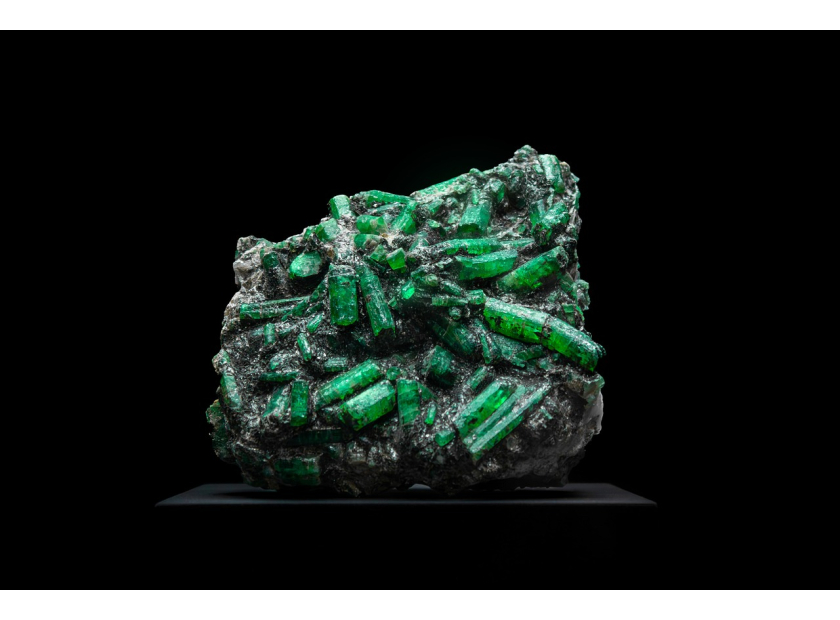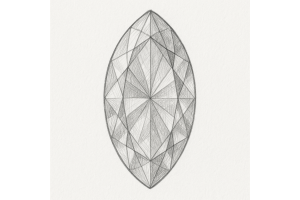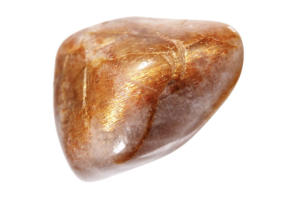GBP
/
GBP
/
Shipping to:
Currency:
How to Tell If a Chrysoberyl Is Real – Gemstone Identification Guide
Chrysoberyl is a captivating gemstone cherished for its remarkable properties, including the mesmerising cat's eye effect and the rare colour-changing alexandrite variety. Ensuring the authenticity of chrysoberyl is crucial for collectors, jewellers, and buyers alike. This guide offers comprehensive insights into identifying genuine chrysoberyl, helping you make informed purchasing decisions.
Understanding Chrysoberyl
Chrysoberyl is a beryllium aluminium oxide mineral known for its exceptional hardness and brilliance. It typically appears in shades of yellow, green, or brown. The most notable varieties include:
- Cat's Eye Chrysoberyl (Cymophane): Exhibits a distinct chatoyancy, resembling the slit eye of a cat.
- Alexandrite: Famous for its remarkable colour change from green in daylight to red under incandescent light.
If you're exploring different stones for unique jewellery settings, check out the range of gemstone engagement rings for further inspiration.
Importance of Authenticating Chrysoberyl
The gemstone market is rife with imitations and synthetics that mimic chrysoberyl's appearance. Distinguishing real chrysoberyl from fakes is vital to avoid overpaying for counterfeit stones and to ensure the quality and value of your purchase.
You might also want to read about the pros and cons of gemstone options in general—lab-grown diamonds vs gemstones breaks it down beautifully.
Physical Characteristics of Genuine Chrysoberyl
Authentic chrysoberyl possesses specific physical properties:
- Hardness: Ranks 8.5 on the Mohs scale, making it highly resistant to scratches.
- Refractive Index: Ranges between 1.746 and 1.755, contributing to its brilliance.
- Specific Gravity: Measures between 3.70 and 3.78, indicating its density.
- Pleochroism: Especially in alexandrite, displaying different colours when viewed from various angles.
You can learn more about how these properties compare across different minerals in this excellent overview on gemstone and diamond formation.
Methods to Test Chrysoberyl Authenticity
To verify the authenticity of chrysoberyl, consider the following tests:
- Visual Inspection: Examine the stone under good lighting for consistent colour and clarity. Cat's eye chrysoberyl should display a sharp, well-defined eye that moves smoothly across the surface when rotated.
- Magnification Analysis: Using a jeweller's loupe, inspect for natural inclusions. Genuine stones often contain fine, parallel needle-like inclusions causing the chatoyancy effect.
- Refractive Index Measurement: Utilise a refractometer to measure the stone's refractive index, which should fall within the range of 1.746 to 1.755.
- Specific Gravity Test: Conduct this test to ensure the stone's density aligns with chrysoberyl's known specific gravity.
- UV Light Examination: Observe the stone under ultraviolet light; natural chrysoberyl typically does not exhibit strong fluorescence.
Identifying Fake or Treated Chrysoberyl
Be vigilant for signs indicating a stone may not be genuine:
- Unusual Colours: Overly vibrant or unnatural hues can suggest synthetic origins.
- Inconsistent Chatoyancy: In cat's eye chrysoberyl, a blurry or off-centre eye may indicate imitation.
- Visible Bubbles: The presence of bubbles, especially when viewed under magnification, often points to glass imitations.
- Surface Scratches: Given its hardness, genuine chrysoberyl should resist scratching; visible scratches may signal a softer, counterfeit material.
For beautifully set, authentic gemstone pieces, check out these curated gemstone rings for gifting.
Consulting a Gemologist
For definitive authentication, consider seeking a certified gemologist's expertise. They can provide detailed analyses and laboratory reports, offering peace of mind regarding your gemstone's authenticity.
Tips for Purchasing Authentic Chrysoberyl
When acquiring chrysoberyl:
- Choose Reputable Dealers: Opt for well-established jewellers or dealers with positive reviews and transparent policies.
- Request Certification: Ask for a certificate of authenticity from a recognised gemological laboratory.
- Be Cautious with Bargains: Extremely low prices can be a red flag for counterfeit stones.
- Prefer In-Person Inspection: If possible, examine the gemstone personally or consult with an expert before finalising the purchase.
If you're after something distinctive, have a look at these non-traditional engagement rings for ideas that stand out.
Understanding Chrysoberyl and Alexandrite
While both are varieties of chrysoberyl, alexandrite is distinguished by its unique colour-change phenomenon, shifting from green in daylight to red under incandescent light. This remarkable feature, combined with its rarity, makes alexandrite more valuable than other chrysoberyl types.
For a symbolic piece to match your gemstone, explore elegant diamond wedding ring designs that complement any collection.
Frequently Asked Questions
Is cat's eye chrysoberyl always genuine?
Not necessarily. While the cat's eye effect is a hallmark of chrysoberyl, other gemstones and synthetic materials can mimic this phenomenon. It's essential to conduct thorough tests to confirm authenticity.
Can I test chrysoberyl at home?
Basic inspections like visual checks and hardness tests can be performed at home. However, for accurate assessments, specialised equipment and professional expertise are recommended.
How much does genuine chrysoberyl cost?
Prices vary based on factors like variety, quality, and size. High-quality cat's eye chrysoberyl and alexandrite command premium prices due to their rarity and unique properties.
What colour is the most valuable chrysoberyl?
In non-phenomenal chrysoberyl, a vibrant yellow-green hue is highly prized. For alexandrite, a pronounced colour change with vivid green to red hues is most valuable.








